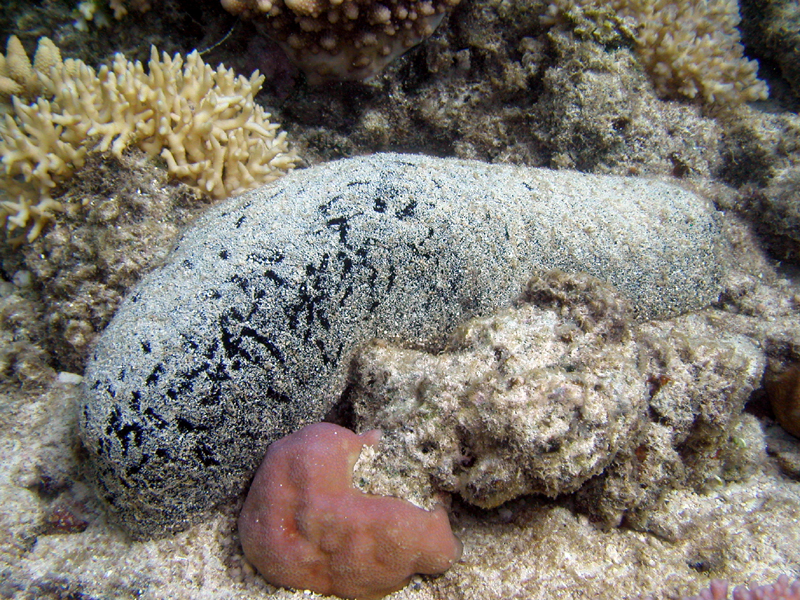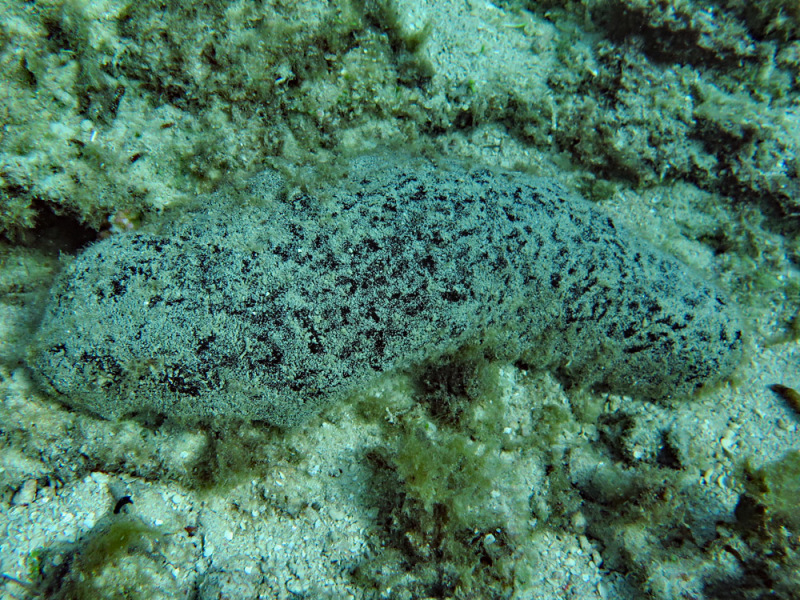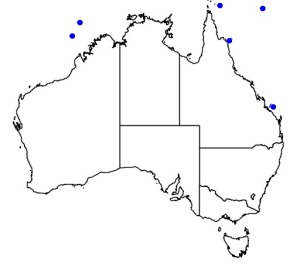Colours
Distinguishing features
Holothuria (Microthele) whitmaei is a large, solid holothurian that is always black in colour and often has a thin coating of sand clinging to the upper surface. There are often several protrusions around the edge of the body where the flat underside meets the steeply-rising sides, giving the species its common name of Black Teatfish within the trepang industry.
Holothuria (Microthele) fuscogilva has a similar body shape and the two were originally thought to be colour forms of the same species. Holothuria (Microthele) fuscogilva is always mottled with white and black while Holothuria (Microthele) whitmaei is completely black. Both species are valuable as edible trepang.
Size
- Size data has not been obtained.
Depth range
- Depth range data is not yet available.
Synonyms
Distribution
Distribution and habitat preferences
Holothuria (Microthele) whitmaei is relatively common in reef habitats at Lizard Island. However there is management concern for GBR populations due to over-harvesting.
Behaviour
A single individual was observed spawning at about 3.30 pm on 14 July 2001 on the reef just beyond the seawater intake line for the Station's aquarium system. The anterior end was raised off the substrate and spawn was trickling from the gonopore. Three other H. whitmaei in the vicinity were not spawning. This is one of the few holothurian species known to spawn during the day in winter.
Web resources
References
- Bakus, G.J. (1981). Chemical defense mechanisms on the Great Barrier Reef, Science, 211: 497-499. LIRS catalog number 41.
- Cannon, L.R.G. and H. Silver (1986). Sea Cucumbers of Northern Australia Queensland Museum, Brisbane. LIRS catalog number 229.
- Rowe, F.W.E. and J. Gates (1995). Echinodermata in: Zoological Catalogue of Australia. Vol. 33, xiii, 510 pp. Wells, A. (Ed.). CSIRO, Melbourne, Australia.
- View all references



